#reilly cartwright
Photo

Meet Reilly Cartwright!
From a young age, Reilly wanted to make her mark on the world. She stayed away from people trying to be her friend, her books were enough company for her. She strived to do her best and it paid off. She was the top of her class in grade school and high school. Because of her high grades, people would make fun of her, and in came big brother Wren to save the day. She was grateful for Wren, but she sometimes wanted to handle things by herself.
After becoming high school valedictorian, Reilly began to flaunt her genius thinking it would put the people who made fun of her in their places. However, it did the opposite. People began to think "Miss Perfect Angel" wasn't perfect, but rude. Now, she wants to make friends and apologize for her mistakes, but her snobby ways may get the best of her.
Aspiration ~ Friend of the World
Traits ~ Bookworm, Good, Snob
DISCLAIMER: Reilly is not my heir!! she is Wren’s twin, and they are currently roommates. sooo.. yeah.
#cartwright intros#cartwright gen 1#cartwright#new simblr#new to simblr#simblr#maxis match#sims 4#sims 4 legacy#sims 4 story#ts4#reilly cartwright
11 notes
·
View notes
Text
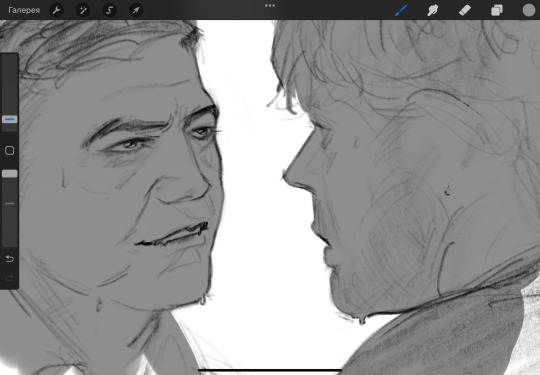
I guess they wanted to ki(ss)ck each other so badly in these scene
8 notes
·
View notes
Text
Ten fandoms, ten characters
Tagged by @bywayofmemory!
1. Chronicles of Narnia - Jill Pole
2. Danny Phantom - Valerie Gray
3. Alex Rider - Alex Rider
4. Batman - Jason Todd
5. 12 Monkeys - Cassandra Reilly
6. Dune - Chani
7. Slow Horses - River Cartwright
8. Bartimaeus Trilogy - Kitty Jones
9. Umbrella Academy - Number Five
10. Artemis Fowl - Artemis Fowl
Tagging @pencildragon11 @marzfartz @eidetictelekinetic @thatgirlnevershutsup and anyone else who wants to play!
#fandom tag game#tag game#this is so hard bc I have like two top fandoms I read for#two top fandoms I write for#and then a bazillion that I love the canon and will occasionally look for fic and fanart etc
3 notes
·
View notes
Text
Book Review: The Last Airship by Christopher Cartwright
Book Review: The Last Airship by Christopher Cartwright
The Last Airship by Christopher CartwrightMy rating: 4 of 5 starsAmazonAction packedHistorically intriguing, human drama and pathos abound. I would be more animated about this series but the author insists on having sailors curse like sailors. Can you find a more articulate way to express outrage please. I do like that the main guy is never motivated by money though, and the love sequence was…

View On WordPress
0 notes
Text
hi everyone, it’s meha ( andrew sterling aka noah centineo & chandler heine aka richard madden) again, back with a third character. Ms. Sienna Rose Rothschild Daniels is a lil bougie and a lil judgy, full of heart and love for her family and friends, though! She works as a journalist and photographer at the Frostford Herald, is 33 years old, and grew up in Frostford. She left town when she was 18 to go to NYU and came back a few months ago. Below the cut I’m putting some facts about her for easy reference! (please see default sienna face in gif)
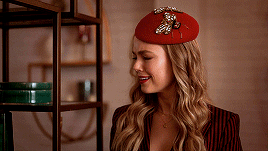
ABOUT:
Sienna is the middle child, a girl sandwiched between her brothers. Ryder (older, married to Rosalie) and Jack (younger, got a girl pregnant recently) are incredibly important to her, even if all three of them are fuckin’ disasters!!
Huge family— on her Daniels side (her dad), she’s related to Tanner, Thomas (RIP), Carter, Lizzie, and Lexa Cartwright and Katrina McDonald. She loves those fools and any time the eight surviving cousins (RIP Thomas) get together, it’s a fun time. Also chaos.
Her Rothschild side comes with lots of money and a trust fund for her and each of her siblings— a far cry from her baby cousin Kat who has grown up an orphan on a farm.
Sienna literally hates her Rothschild grandparents! Hates them!!!!!!
But she loves $$$$$ so she puts up with them and has her whole life
Sienna has been proposed to twice in her life and has literally PEACED OUT both times. The first happened at age 18 when her boyfriend/best friend/love of her life Austin Lockhart proposed to her right after they graduated high school because he was going into the military. She moved to NYC at the beginning of that summer instead of waiting until August when NYU’s fall semester began.
She double majored in journalism and environmental science in undergrad, per Carter Institute requirements, and became a producer with the travel channel for a travel show after college (she worked her way up the ladder)
In New York, her friend/best friend’s younger sister Juniper Kennedy set her up with June’s husband’s brother. Sienna and said brother hit it off and started dating!!
A year later he also proposed to her at a dinner full of all of their friends, to which she said, “oh, wow, babe,” and covered her hands with her mouth and pretended to cry and get overwhelmed and said they should talk about it later, only later never actually came because the next day she packed all her stuff and caught a flight to Mobile, Alabama.
This girl snatches her hand away anytime a man tries to put a diamond on the ring finger of her left hand.
She just has commitment issues, and [lily james voice] “i wanna make some memories.”
Some of these memories have included Sadie Lockhart (remember love of her life Austin? His crazy little sister) spreading rumors about her around town, including one that Sienna wanted to kill her own grandparents. Sadie probably doesn’t even regret it.
STILL, there are good memories, like getting to live in Chicago and Philly and Nashville, San Francisco and Seattle, tour Thailand and mainland China and experience the best of Singapore all on the Travel Channel’s dime.
She’s been back in Frostford for about six months now and is renting out this cute 2b/2b house that’s starting to grow on her & she’s got a job at the Herald to keep her busy while she continues to work remotely for the Travel Channel. Every so often she’ll go to Atlanta for a day or two to check in at the office there.
If you are still reading— why?
CONNECTIONS: (non-exhaustive list, feel free to dm me!)
BEST FRIENDS:
Girl Gang Shit: Hannah Cartwright, Anna Rhee, Lemon Kennedy
General Life Best Friends who are her Life Best Friends: Daniel Kim, Beau Castor
FRIENDS: (4/X)
Brooke Parker
June Kennedy
Persimmon Kennedy
Peach Kennedy
Christopher Aldrich
FAMILY:
Tanner Cartwright
Carter Cartwright
Lexa Cartwright
Kat McDonald
ENEMIES:
Owen Heine
Sadie Lockhart
Gerry Dixon
COWORKERS
Rory Reilly
Easton Williams
Nash Gordon
Nora McDowell
13 notes
·
View notes
Text
References
Anderson, D., & Anderson, L. A. (2010). Beyond change management: How to achieve breakthrough results through conscious change leadership. San Francisco, CA: John Wiley & Sons.
Barlow, J. B., & Dennis, A. R. (2016). Not as smart as we think: A study of collective intelligence in virtual groups. Journal of Management Information Systems, 33(3), 684-712.
Bartel, C. A., Wrzesniewski, A., & Wiesenfeld, B. M. (2012). Knowing where you stand: Physical isolation, perceived respect, and organizational identification among virtual employees. Organization Science, 23(3), 743-757.
Blustein, D. L. (2006). The psychology of working: A new perspective for career development, counseling, and public policy. New York, NY: Routledge.
Brazzel, M. (2014). Organization change theories and models. In B. B. Jones & M. Brazzel (Eds.), NLT Handbook of organization development and change: Principles, practices and perspectives (255-282). San Francisco, CA: Somerset Pfieffer.
Cain, S. (2013). Quiet: The power of introverts in a world that can’t stop talking. New York, NY: Random House.
Dede, C. (2005). Planning for neomillennial learning styles: Implications for investments in technology and faculty. In J. Oblinger and D. Oblinger (Eds.), Educating the next generation (pp. 226-247). Boulder, CO: EDUCAUSE Publishers.
Dekker, D. M., Rutte, C. G., & Van den Berg, P. T. (2008). Cultural differences in the perception of critical interaction behaviors in global virtual teams. International Journal of Intercultural Relations, 32, 441-452. doi:10.1016/j.ijintrel.2008.06.003
DeSanctis, G., & Poole, M. S. (1994). Capturing the complexity in advanced technology use: Adaptive structuration theory. Organization Science, 5(2), 121-147.
Dube, L., & Robey, D. (2009). Surviving the paradoxes of virtual teamwork. Information Systems Journal, 19(1), 3-30.
Dulebohn, J. H., & Hoch, J. E. (2017). Virtual teams in organizations. Human Resource Management Review 27(4), 569-574.
Earley, P. C., & Ang, S. (2003). Cultural intelligence: Individual interactions across cultures. Standford, CA: Stanford University Press.
Felder, R. M., & Soloman, B. A. (n.d.) Learning styles and strategies. Retrieved from www2.ncsu.edu:8010/unity/lockers/users/f/felder/public/ILSdir/styles.htm
Frohman, A.L. (1997). Igniting organizational change from below: The power of personal initiative. Organizational Dynamics, 25(3), 39-53.
Gardner, H. (1983). Frames of mind: The theory of multiple intelligences. New York, NY: Basic Books.
Gardner, H. (1997). Is there a moral intelligence? In M. Runco (Ed.) The creativity research handbook. Cresskill, NJ: Hampton Press.
Gibson, C. B., & Gibbs, J. L. (2006). Unpacking the concept of virtuality: The effects of geographic dispersion, electronic dependence, dynamic structure, and national diversity on team innovation. Administrative Science Quarterly, 51, 451-495.
Gill, R. (2003). Change management – or – Change leadership? Journal of Change Management, 3(4), 307-318.
Godart, C., Bouthier, C., Canalda, P., Charoy, F., Molli, P., Perrin, O., Saliou, H., Bignon, J. C., Halin, G., & Malcurat, O. (2001). Asynchronous coordination of virtual teams in creative applications (co-design or co-engineering): Requirements and design criteria. Australian Computer Science Communications, 23(6), 135-142.
Goleman, D. (1995). Emotional intelligence: Why it can matter more than IQ.London, UK: Bloomsbury Publishing.
Guimond, S. (2016). The effect of narrative format and target race attitude change about poverty in college students. (Honors thesis, Ball State University). Retrieved fromhttp://cardinalscholar.bsu.edu/bitstream/handle/123456789/200412/A374_2016GuimondSavannah-opt.pdf?sequence=1
Gupta, P. (2017, April 6). Focus on results not tasks. [Video post]. Retrieved from https://www.youtube.com/watch?v=vCokpMsQJsk
Hackman, J. R. (1987). The design of work teams. In J. Lorsch (Ed.), Handbook of organizational behavior (pp. 315-342).Englewood Cliffs, NJ: Prentice-Hall.
Hartman, T. (2014). Chakra wisdom oracle toolkit: A 52 week journey of self-discovery with the lost fables. London, UK: Watkins.
Hechler, S., Neyer, F. J., & Kessler, T. (2016). The infamous among us: Enhanced reputational memory for uncooperative ingroup members. Cognition, 157, 1-13.
Henderson, L. S., Stackman, R. W., & Lindekilde, R. (2016). The centrality of communication norm alignment, role clarity, and trust in global project teams. International Journal of Project Management, 34(8), 1717-1730.
Hertel, G., Geister, S., & Konradt, U. (2005). Managing virtual teams: A review of current empirical research. Human Resource Management Review, 15, 69-95.
Hildebrandt, M., Jehle, L., & Meister, S. (2013). Closeness at A Distance: Leading Virtual Groups to High Performance. Faringdon, UK: Libri Publishing.
Hoch, J. E., & Kozlowski, S. W. (2014). Leading virtual teams: Hierarchical leadership, structural supports, and shared team leadership. Journal of Applied Psychology, 99(3), 390-403.
Hofstede, G. (1980). Culture’s consequences: International differences in work-related values. Newbury Park, CA: Sage.
Huysman, M. H., & de Wit, D. H. (2013). Knowledge sharing in practice.Dordrecht, the Netherlands: Kluwer Academic Publishers.
Ioanid, A., Zarzu, C., & Scarlat, C. (2014). Communicating successfully when managing multicultural teams. Sea: Practical Application of Science, 2(3), 349-354.
Irving, J. A. (2010). Educating global leaders: Exploring intercultural competence in leadership education. Journal of International Business & Cultural Studies, 3, 1-14.
Janssens, M., & Brett, J. M. (2006). Cultural intelligence in global teams: A fusion model of collaboration. Group & Organization Management, 31(1), 124-153.
Jarvenpaa, S. L., & Leidner, D. E. (1998). Communication and trust in global virtual teams. Journal of Computer‐Mediated Communication, 3(4). doi: 10.1111/j.1083-6101.1998.tb00080.x
Jokinen, T. (2005). Global leadership competencies: A review and discussion. Journal of European Industrial Training, 29(2/3), 199-216.
Jones, B. B. (2014). A framework for change: Capacity, competency, and capability. In B. B. Jones & M. Brazzel (Eds.), NLT Handbook of organization development and change: Principles, practices and perspectives (233-254). San Francisco, CA: Somerset Pfieffer.
Karp, H. B. (1980) Team building from a Gestalt perspective. In J. W. Pfeiffer and J. E. Jones (Eds.), The 1980 Annual Handbook for Group Facilitators. San Diego, CA: University Associates.
Katz, L. (2015). Book review: Hildebrandt, Jehle, Meister, with Skoruppa closeness at a distance. Houston, TX: Leadership Crossroads.
Lennick, D., & Kiel, F. (2007). Moral intelligence: Enhancing business performance and leadership success. Upper Saddle River, NJ: Pearson Prentice Hall.
Lewin, K. (1997). Frontiers in group dynamics. In D. Cartwright (ed.), Resolving social conflicts & field theory in social science (301-336). Washington, DC: American Psychological Association.
Ling, B. (2015, August 26). Intro: Processes and procedures. [Video post]. Retrieved from https://www.youtube.com/watch?v=4e16OQRYtXU&feature=youtu.be
Lojeski, K. S., & Reilly, R. R. (2008). Uniting the virtual workforce: Transforming leadership and innovation in the globally integrated enterprise. Hoboken, NJ: John Wiley & Sons.
Makarius, E., & Larson, B. (2017). Changing the perspective of virtual work: Building virtual intelligence at the individual level. The Academy of Management Perspectives, 31(2), 159–178. doi: 10.5465/amp.2014.0120
Manole, I. (2014). Virtual teams and E-leadership in the context of competitive environment – literature review. Journal of Economic Development, Environment and People, 3(3), 72-76.
Manz, C. C. (1986). Self-leadership: Toward an expanded theory of self-influence processes in organizations. Academy of Management Review, 11(3), 585-600.
Martinic, A., Fertalj, K., & Kalpic, D. (2012). Methodological framework for virtual team project management. International Journal of Innovation, Management and Technology, 3(6), 702.
Martins, L. L., Gilson, L. L., & Maynard, M. T. (2004). Virtual teams: What do we know and where do we go from here? Journal of Management, 30(6), 805-835.
McCallum, J. (2013). Followership: The other side of leadership. Retrieved from
https://iveybusinessjournal.com/publication/followership-the-other-side-of-leadership/
McGuire, D., Garavan, T. N., Cunningham, J., & Duffy, G. (2016). The use of imagery in the campaign speeches of Barack Hussein Obama and John McCain during the 2008 US presidential election. Leadership & Organization Development Journal, 37(4), 430-449.
Meyer, E. (2010, August 19). The four keys to success with virtual teams. Retrieved from https://www.forbes.com/2010/08/19/virtual-teams-meetings-leadership-managing-cooperation.html
Miller, E. (Dec. 1998). A note on the protomental system and “groupishness”: Bion’s basic assumptions revisited. Human Relations, 51(13), 1495-1509.
Montoya-Weiss, M., Massey, A., & Song, M. (2001). Getting it together: Temporal coordination and conflict management in global virtual teams. The Academy of Management Journal, 44(6), 1251-1262.
Mortensen, M., Caya, O., Pinsonneault, A. (2009). Virtual teams demystified: An integrative
framework for understanding virtual teams and a synthesis of research. MIT Sloan School Working Paper 4738-09.
Nandhakumar, J., & Baskerville, R. (2006). Durability of online team working: Patterns of trust. Information Technology & People, 19(4), 371-389.
Poole, M. S. & Hollingshead, A. B., Editors. (2005). Theories of small groups: Interdisciplinary perspectives. Thousand Oaks, CA: Sage Publications.
Quinn, R. E., Spreitzer, G. M., & Brown, M. V. (2000). Changing others through changing ourselves: The transformation of human systems. Journal of Management Inquiry, 9(2), 147-164.
Schwartz, D. (2007). Integrating knowledge transfer and computer-mediated communication: Categorizing barriers and possible responses. Knowledge Management Research & Practice, 5(4), 249-259.
Snellman, C. L. (2014). Virtual teams: Opportunities and challenges for e-leaders. Procedia Social and Behavioral Sciences, 1(10), 1251-1261.
Stern, W. (1912). The psychological methods of intelligence testing. Baltimore, MD: Warwick and York.
Symons, J., & Stenzel, C. (2007). Virtually borderless: An examination of culture in virtual teaming. Journal of General Management, 32(3), 1-17.
Thorndike, R. L., & Stein, S. (1937). An evaluation of the attempts to measure social intelligence. Psychological Bulletin, 34(5), 275.
Tubbs, S. L., & Schulz, E. (2006). Exploring a taxonomy of global leadership competencies and meta-competencies Journal of American Academy of Business, Cambridge, 8(2), 29-34.
Tuckman, B. (1965). Developmental sequence in small groups. Psychological Bulletin 63(6): 384–99.
Vanzant, I. (2015). Trust: Mastering the four essential trusts. Charlsbad, CA: SmileyBooks.
Vázquez, A., Yzerbyt, V., Dovidio, J. F., & Gómez, Á. (2016). How we think they see us? Valence and difficulty of retrieval as moderators of the effect of meta‐stereotype activation on intergroup orientations. International Journal of Psychology, 1-9. doi: 10.1002/ijop.12260
Velpic. (2016, September 4). Knowledge sharing benefits. In R. Francis (Ed.) Webinar video recap & deck: Knowledge sharing in the workplace [Slide 13]. Retrieved from https://www.slideshare.net/VelpicLimited/knowledge-sharing-in-the-workplace
Wilson, J. M., Boyer O'Leary, M., Metiu, A., & Jett, Q. R. (2008). Perceived proximity in virtual work: Explaining the paradox of far-but-close. Organization Studies, 29(7), 979-1002.
Wpbeginner. (20 September 2017). How to choose the best blogging platform in 2017 (Compared). Retrieved from http://www.wpbeginner.com/beginners-guide/how-to-choose-the-best-blogging-platform/
Zakaria, N., Amelinckx, A., & Wilemon, D. (2004). Working together apart? Building a knowledge-sharing culture for global virtual teams. Creativity and Innovation Management, 13(1), 15-29.
Zohar, D. (1997). Rewiring the corporate brain: Using the new science to rethink how we structure and lead organizations. San Francisco, CA: Berrett-Koehler Publishers.
1 note
·
View note
Text


What a year for books! I mean, I surpassed my Goodreads challenge, even though I knew I was being a little stingy, but I also knew life sometimes throws curves at you, so better safe than sorry. Looking back over the list of books I read this year, I realize the year didn’t rush by, it was well paced and gave me great book memories

Speaking of memories, this years’ favourite is exactly that, In Moonlight and Memories trilogy by Julie Ann Walker. This book, divided into three parts, each part focusing on the story from one of the three characters, had it all, and it executed it all perfectly and beautifully. It still grabs me and brings me back to the story at random times, my subconscious won’t let it go, and I’m perfectly okay with that. Not a standard romance, not even a love triangle really, it is a story of three friends who love each other unconditionally. It’s their story, of their lives, and how they got to where they are now, and where they are going next.
https://dargeereads.tumblr.com/post/1...
https://dargeereads.tumblr.com/post/1...
https://dargeereads.tumblr.com/post/1...

My second favourite book this year is a straight up romance, with single parents, and unbelievable emotion. Down Too Deep by J. Daniels left me with warm fuzzies, and tearful fits, for days after finishing it. Nate is the book boyfriend everybody wants and needs. Jenna is the woman we all cheer for and want to see succeed. It is packed with love, caring, confusion, loss, steaminess, and tear spilling joy and pain. It also resonated with me, and completely caught me off guard, but it stuck with me in ways few “regular” romance books do
https://dargeereads.tumblr.com/post/1...

Molly O’Keefe somehow figured out how to make you feel good with a book with death in the title. A Day in the Death of Walter Zawislak isn’t a romance, but is a story of love. Oh, it covers a whole lot of emotions, but this little book, in the end, reminds you of the power of love. I couldn’t cover my top reads of 2019 without this book, because it certainly had an impact
https://dargeereads.tumblr.com/post/1...

So, what else happened in 2019? Candace Blevins ended her Only Human Urban Fantasy series, and yes, we find out what Isaac is, while we see how Kirsten’s world changes. I also caught up on Candace’s RTMC series backlog. More Honey Badger awesomeness from Shelley Laurenston, and a new series under her G.A. Aiken name, The Blacksmith Queen. More bears, polar bears to be exact, from Vivian Arend. I got to meet NJ Walters at Romancing the Capital, and gush about her Drakon’s and Tapestry series’. Speaking of RTC, Eve Langlais had me hooked with her UF series, The Forsaken Chronicles, and her Mecha Origins series, oh and her Chimera series, seriously, this woman can keep you reading for weeks! Annika Martin gave us a cute little quickie with Hot Ghost that was perfect for Hallowe’en. Zoe York gave us a Vikings Need and made my October! She also had an Ainsley Booth release that was deliciously wonderful 😉

I started the year with Lorelei James’ wound tight, and finally dug into her Mastered Series. I was once all caught up on her books, and am almost there again. Michele Zurlo added to and re-released her Letting Go series. Pam Godwin gave us two new installments in her Deliver series. Lexi Blake gave us more Sophie Oak releases in Bliss and Siren series, and the complete Faery story series, as well as some Lost Boys. Cora Reilly was back with force, bringing us more mafia bad boys than we could ever dream of! Roxie Rivera popped up and sprung Kostya on us, making that one of the high points of the year!

Cherise Sinclair started a new series, and still gave us some from our favourite from her. Bianca Sommerland released the long awaited Off Beat, and started her new co-written The Asylum Fight Club series. Carrie Ann Ryan poked at our emotions in her Fracture Connections series, and started a new family branch in her Montgomery Ink world. Melissa Schroeder gave us cupcake making, tattooed, ex-military men

I caught up with Jennifer Ashley’s cowboys, and then binged her MacKenzie’s and McBride’s series I hadn’t yet read on audio. Helena Hunting gave us a Meet Cute to be remembered, and more in the shacking up world, before switching us back to her new hockey series. Elle Kennedy gave us more collegiate hockey, and then her and Sarina Bowen dazzled us with their Top Secret offering.
Kitty Thomas released her Persephone in audio, and then took us back to the training house. Sierra Cartwright gave us some alpha-liscious males to swoon over. Skye Warren brushed the taboo in her ever-amazing way.

I tried new authours, and found a few new favourites. I found myself drowning in books to read, and learned to balance new releases and those on my TBR. I embraced and enjoyed reading, not just as an escape, though it is that sometimes, but as my thing I enjoy to do out of all the things I enjoy to do!
#Year in Books#year in review#am reading#reader#romance#book love#book blogger#bookworm#bookaholic#book obsessed#book buzz#book world#romance books
1 note
·
View note
Text
Sherlock Holmes (2009)
Action, Adventure, Mystery |
Sherlock Holmes is a period mystery action film based on the character of the same name created by Sir Arthur Conan Doyle. The film was directed by Guy Ritchie and produced by Joel Silver, Lionel Wigram, Susan Downey, and Dan Lin. The screenplay, by Michael Robert Johnson, Anthony Peckham, and Simon Kinberg, was developed from a story by Wigram and Johnson. Robert Downey Jr. and Jude Law portray Sherlock Holmes and Dr. John Watson, respectively.
In 1890, eccentric detective Holmes and his companion Watson are hired by a secret society to foil a mysticist’s plot to gain control of Britain by seemingly supernatural means. Rachel McAdams stars as their former adversary Irene Adler and Mark Strong portrays villain Lord Henry Blackwood. The film was widely released in North America on 25 December 2009, and on 26 December 2009 in the UK, Ireland, the Pacific and the Atlantic.
In 1890 London, private detective Sherlock Holmes and his partner Dr. John Watson prevents the ritualistic murder of a woman by Lord Henry Blackwood, who has killed five other young women similarly. Inspector Lestrade and the police arrest Blackwood. Three months later, Watson is engaged to Mary Morstan and moving out of 221B Baker Street; while he enjoys their adventures together, Watson looks forward to not having to deal with Holmes’ eccentricities. Meanwhile, Blackwood has been sentenced to death and requests to see Holmes, whom he warns of three more unstoppable deaths that will cause great changes to the world. Blackwood is subsequently hanged.
Director: Guy Ritchie
Writers: Michael Robert Johnson, Anthony Peckham, Simon Kinberg, Lionel Wigram, Arthur Conan Doyle
Stars: Robert Downey Jr., Jude Law, Rachel McAdams, Mark Strong, Eddie Marsan, Robert Maillet, Geraldine James
youtube
►Cast:
Robert Downey Jr.…Sherlock HolmesJude Law…Dr. John WatsonRachel McAdams…Irene AdlerMark Strong…Lord Henry BlackwoodEddie Marsan…Inspector LestradeRobert Maillet…DredgerGeraldine James…Mrs. HudsonKelly Reilly…Mary MorstanWilliam Houston…Constable ClarkHans Matheson…Lord CowardJames Fox…Sir Thomas RotheramWilliam Hope…Ambassador StandishClive Russell…Captain TannerOran Gurel…ReordanDavid Garrick…McMurdoKy Discala…Maid (as Kylie Hutchinson)Andrew Brooke…Guard CaptainTom Watt…Carriage DriverJohn Kearney…Carriage DriverSebastian Abineri…Coach DriverJonathan Gabriel Robbins…GuardJames A. Stephens…Captain PhilipsTerence Taplin…Groundskeeper (as Terry Taplin)Bronagh Gallagher…Palm ReaderEd Tolputt…Anonymous ManJoe Egan…Big ManJefferson Hall…Young GuardMiles Jupp…WaiterMarn Davies…Police OfficerAndrew Greenough…Prison GuardNed Dennehy…Man with RosesMartin Ewens…Removable ManAmanda Grace Johnson…Young Woman SacrificeJames Greene…GovernorDavid Emmings…Grave PolicemanBen Cartwright…Grave PolicemanChris Sunley…Grave PolicemanMichael Jenn…PreacherTimothy O’Hara…Porter / SmithGuy Williams…Golden Dawn EnvoyPeter Miles…ThugSharon Ashton…Dock ladyWilliam Atkinson…BrazierPaul Bateman…PrisonerKathryn Beaumont…Vexed WomanAidan Belizaire…ExtraJonathan Bridge…Man Carrying Tray of Fish in MarketPeter Paul Burrows…Golden Dawn MemberKenneth W Caravan…Rake at Boxing TournamentAlan Carter…Lord & MP in House of LordsKenneth Coombs…Dining GuestRadu Andrei Cucu…Frenzy ManJames Currie…Prison GuardRoss Donnelly…Man in StreetPaul J. Dove…BishopJasey Ó Dálaigh…MichaelAndrew Goldfarb…OfficerKas Graham…Dog FighterMichael Hennessy…Gentleman DinerMarc Hockley…Preacher’s Look-out / Frenzied ManThomas Kadman…PallbearerBobby Leigh…BensiBrendan McCoy…FishmongerTerence Pickering…Manchester LocalMatthew Radway…BarmanRocco Ritchie…Boy in the StreetBryan Samson…LordRobert Stone…PrizefighterDavid Swift…Peer of the RealmJohn Warman…Policeman
Sources: imdb & wikipedia
The post Sherlock Holmes (2009) first appeared on TellUsEpisode.net.
from WordPress https://www.tellusepisode.net/sherlock-holmes-2009.html
1 note
·
View note
Text
References
Anderson, D., & Anderson, L. A. (2010). Beyond change management: How to achieve breakthrough results through conscious change leadership. San Francisco, CA: John Wiley & Sons.
Barlow, J. B., & Dennis, A. R. (2016). Not as smart as we think: A study of collective intelligence in virtual groups. Journal of Management Information Systems, 33(3), 684-712.
Bartel, C. A., Wrzesniewski, A., & Wiesenfeld, B. M. (2012). Knowing where you stand: Physical isolation, perceived respect, and organizational identification among virtual employees. Organization Science, 23(3), 743-757.
Blustein, D. L. (2006). The psychology of working: A new perspective for career development, counseling, and public policy. New York, NY: Routledge.
Brazzel, M. (2014). Organization change theories and models. In B. B. Jones & M. Brazzel (Eds.), NLT Handbook of organization development and change: Principles, practices and perspectives (255-282). San Francisco, CA: Somerset Pfieffer.
Cain, S. (2013). Quiet: The power of introverts in a world that can't stop talking. New York, NY: Random House.
Dede, C. (2005). Planning for neomillennial learning styles: Implications for investments in technology and faculty. In J. Oblinger and D. Oblinger (Eds.), Educating the next generation (pp. 226-247). Boulder, CO: EDUCAUSE Publishers.
Dekker, D. M., Rutte, C. G., & Van den Berg, P. T. (2008). Cultural differences in the perception of critical interaction behaviors in global virtual teams. International Journal of Intercultural Relations, 32, 441-452. doi:10.1016/j.ijintrel.2008.06.003
DeSanctis, G., & Poole, M. S. (1994). Capturing the complexity in advanced technology use: Adaptive structuration theory. Organization Science, 5(2), 121-147.
Dube, L., & Robey, D. (2009). Surviving the paradoxes of virtual teamwork. Information Systems Journal, 19(1), 3-30.
Dulebohn, J. H., & Hoch, J. E. (2017). Virtual teams in organizations. Human Resource Management Review 27(4), 569-574.
Earley, P. C., & Ang, S. (2003). Cultural intelligence: Individual interactions across cultures. Standford, CA: Stanford University Press.
Felder, R. M., & Soloman, B. A. (n.d.) Learning styles and strategies. Retrieved from www2.ncsu.edu:8010/unity/lockers/users/f/felder/public/ILSdir/styles.htm
Frohman, A.L. (1997). Igniting organizational change from below: The power of personal initiative. Organizational Dynamics, 25(3), 39-53.
Gardner, H. (1983). Frames of mind: The theory of multiple intelligences. New York, NY: Basic Books.
Gardner, H. (1997). Is there a moral intelligence? In M. Runco (Ed.) The creativity research handbook. Cresskill, NJ: Hampton Press.
Gibson, C. B., & Gibbs, J. L. (2006). Unpacking the concept of virtuality: The effects of geographic dispersion, electronic dependence, dynamic structure, and national diversity on team innovation. Administrative Science Quarterly, 51, 451-495.
Gill, R. (2003). Change management – or – Change leadership? Journal of Change Management, 3(4), 307-318.
Godart, C., Bouthier, C., Canalda, P., Charoy, F., Molli, P., Perrin, O., Saliou, H., Bignon, J. C., Halin, G., & Malcurat, O. (2001). Asynchronous coordination of virtual teams in creative applications (co-design or co-engineering): Requirements and design criteria. Australian Computer Science Communications, 23(6), 135-142.
Goleman, D. (1995). Emotional intelligence: Why it can matter more than IQ. London, UK: Bloomsbury Publishing.
Guimond, S. (2016). The effect of narrative format and target race attitude change about poverty in college students. (Honors thesis, Ball State University). Retrieved from http://cardinalscholar.bsu.edu/bitstream/handle/123456789/200412/A374_2016GuimondSavannah-opt.pdf?sequence=1
Gupta, P. (2017, April 6). Focus on results not tasks. [Video post]. Retrieved from https://www.youtube.com/watch?v=vCokpMsQJsk
Hackman, J. R. (1987). The design of work teams. In J. Lorsch (Ed.), Handbook of organizational behavior (pp. 315-342). Englewood Cliffs, NJ: Prentice-Hall.
Hartman, T. (2014). Chakra wisdom oracle toolkit: A 52 week journey of self-discovery with the lost fables. London, UK: Watkins.
Hechler, S., Neyer, F. J., & Kessler, T. (2016). The infamous among us: Enhanced reputational memory for uncooperative ingroup members. Cognition, 157, 1-13.
Henderson, L. S., Stackman, R. W., & Lindekilde, R. (2016). The centrality of communication norm alignment, role clarity, and trust in global project teams. International Journal of Project Management, 34(8), 1717-1730.
Hertel, G., Geister, S., & Konradt, U. (2005). Managing virtual teams: A review of current empirical research. Human Resource Management Review, 15, 69-95.
Hildebrandt, M., Jehle, L., & Meister, S. (2013). Closeness at A Distance: Leading Virtual Groups to High Performance. Faringdon, UK: Libri Publishing.
Hoch, J. E., & Kozlowski, S. W. (2014). Leading virtual teams: Hierarchical leadership, structural supports, and shared team leadership. Journal of Applied Psychology, 99(3), 390-403.
Hofstede, G. (1980). Culture’s consequences: International differences in work-related values. Newbury Park, CA: Sage.
Huysman, M. H., & de Wit, D. H. (2013). Knowledge sharing in practice. Dordrecht, the Netherlands: Kluwer Academic Publishers.
Ioanid, A., Zarzu, C., & Scarlat, C. (2014). Communicating successfully when managing multicultural teams. Sea: Practical Application of Science, 2(3), 349-354.
Irving, J. A. (2010). Educating global leaders: Exploring intercultural competence in leadership education. Journal of International Business & Cultural Studies, 3, 1-14.
Janssens, M., & Brett, J. M. (2006). Cultural intelligence in global teams: A fusion model of collaboration. Group & Organization Management, 31(1), 124-153.
Jarvenpaa, S. L., & Leidner, D. E. (1998). Communication and trust in global virtual teams. Journal of Computer‐Mediated Communication, 3(4). doi: 10.1111/j.1083-6101.1998.tb00080.x
Jokinen, T. (2005). Global leadership competencies: A review and discussion. Journal of European Industrial Training, 29(2/3), 199-216.
Jones, B. B. (2014). A framework for change: Capacity, competency, and capability. In B. B. Jones & M. Brazzel (Eds.), NLT Handbook of organization development and change: Principles, practices and perspectives (233-254). San Francisco, CA: Somerset Pfieffer.
Karp, H. B. (1980) Team building from a Gestalt perspective. In J. W. Pfeiffer and J. E. Jones (Eds.), The 1980 Annual Handbook for Group Facilitators. San Diego, CA: University Associates.
Katz, L. (2015). Book review: Hildebrandt, Jehle, Meister, with Skoruppa closeness at a distance. Houston, TX: Leadership Crossroads.
Lennick, D., & Kiel, F. (2007). Moral intelligence: Enhancing business performance and leadership success. Upper Saddle River, NJ: Pearson Prentice Hall.
Lewin, K. (1997). Frontiers in group dynamics. In D. Cartwright (ed.), Resolving social conflicts & field theory in social science (301-336). Washington, DC: American Psychological Association.
Ling, B. (2015, August 26). Intro: Processes and procedures. [Video post]. Retrieved from https://www.youtube.com/watch?v=4e16OQRYtXU&feature=youtu.be
Lojeski, K. S., & Reilly, R. R. (2008). Uniting the virtual workforce: Transforming leadership and innovation in the globally integrated enterprise. Hoboken, NJ: John Wiley & Sons.
Makarius, E., & Larson, B. (2017). Changing the perspective of virtual work: Building virtual intelligence at the individual level. The Academy of Management Perspectives, 31(2), 159–178. doi: 10.5465/amp.2014.0120
Manole, I. (2014). Virtual teams and E-leadership in the context of competitive environment – literature review. Journal of Economic Development, Environment and People, 3(3), 72-76.
Manz, C. C. (1986). Self-leadership: Toward an expanded theory of self-influence processes in organizations. Academy of Management Review, 11(3), 585-600.
Martinic, A., Fertalj, K., & Kalpic, D. (2012). Methodological framework for virtual team project management. International Journal of Innovation, Management and Technology, 3(6), 702.
McCallum, J. (2013). Followership: The other side of leadership. Retrieved from
https://iveybusinessjournal.com/publication/followership-the-other-side-of-leadership/Links to an external site.
McGuire, D., Garavan, T. N., Cunningham, J., & Duffy, G. (2016). The use of imagery in the campaign speeches of Barack Hussein Obama and John McCain during the 2008 US presidential election. Leadership & Organization Development Journal, 37(4), 430-449.
Meyer, E. (2010, August 19). The four keys to success with virtual teams. Retrieved from https://www.forbes.com/2010/08/19/virtual-teams-meetings-leadership-managing-cooperation.html
Miller, E. (Dec. 1998). A note on the protomental system and “groupishness”: Bion’s basic assumptions revisited. Human Relations, 51(13), 1495-1509.
Montoya-Weiss, M., Massey, A., & Song, M. (2001). Getting it together: Temporal coordination and conflict management in global virtual teams. The Academy of Management Journal, 44(6), 1251-1262.
Mortensen, M., Caya, O., Pinsonneault, A. (2009). Virtual teams demystified: An integrative
framework for understanding virtual teams and a synthesis of research. MIT Sloan School Working Paper 4738-09.
Nandhakumar, J., & Baskerville, R. (2006). Durability of online team working: Patterns of trust. Information Technology & People, 19(4), 371-389.
Poole, M. S. & Hollingshead, A. B., Editors. (2005). Theories of small groups: Interdisciplinary perspectives. Thousand Oaks, CA: Sage Publications.
Quinn, R. E., Spreitzer, G. M., & Brown, M. V. (2000). Changing others through changing ourselves: The transformation of human systems. Journal of Management Inquiry, 9(2), 147-164.
Schwartz, D. (2007). Integrating knowledge transfer and computer-mediated communication: Categorizing barriers and possible responses. Knowledge Management Research & Practice, 5(4), 249-259.
Snellman, C. L. (2014). Virtual teams: Opportunities and challenges for e-leaders. Procedia Social and Behavioral Sciences, 1(10), 1251-1261.
Stern, W. (1912). The psychological methods of intelligence testing. Baltimore, MD: Warwick and York.
Symons, J., & Stenzel, C. (2007). Virtually borderless: An examination of culture in virtual teaming. Journal of General Management, 32(3), 1-17.
Thorndike, R. L., & Stein, S. (1937). An evaluation of the attempts to measure social intelligence. Psychological Bulletin, 34(5), 275.
Tubbs, S. L., & Schulz, E. (2006). Exploring a taxonomy of global leadership competencies and meta-competencies Journal of American Academy of Business, Cambridge, 8(2), 29-34.
Tuckman, B. (1965). Developmental sequence in small groups. Psychological Bulletin 63(6): 384–99.
Vanzant, I. (2015). Trust: Mastering the four essential trusts. Charlsbad, CA: SmileyBooks.
Vázquez, A., Yzerbyt, V., Dovidio, J. F., & Gómez, Á. (2016). How we think they see us? Valence and difficulty of retrieval as moderators of the effect of meta‐stereotype activation on intergroup orientations. International Journal of Psychology, 1-9. doi: 10.1002/ijop.12260
Velpic. (2016, September 4). Knowledge sharing benefits. In R. Francis (Ed.) Webinar video recap & deck: Knowledge sharing in the workplace [Slide 13]. Retrieved from https://www.slideshare.net/VelpicLimited/knowledge-sharing-in-the-workplace
Wilson, J. M., Boyer O'Leary, M., Metiu, A., & Jett, Q. R. (2008). Perceived proximity in virtual work: Explaining the paradox of far-but-close. Organization Studies, 29(7), 979-1002.
Wpbeginner. (20 September 2017). How to choose the best blogging platform in 2017 (Compared). Retrieved from http://www.wpbeginner.com/beginners-guide/how-to-choose-the-best-blogging-platform/
Zakaria, N., Amelinckx, A., & Wilemon, D. (2004). Working together apart? Building a knowledge-sharing culture for global virtual teams. Creativity and Innovation Management, 13(1), 15-29.
Zohar, D. (1997). Rewiring the corporate brain: Using the new science to rethink how we structure and lead organizations. San Francisco, CA: Berrett-Koehler Publishers.
1 note
·
View note
Photo

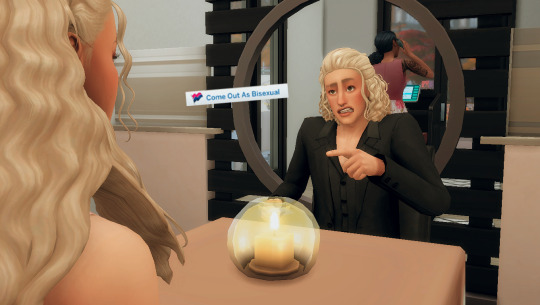

2/3
#cute sibling things#coming out#wren cartwright#reilly cartwright#grace cartwright#cartwright gen 1#sims 4#ts4#simblr#sims 4 legacy#maxis match
9 notes
·
View notes
Text
References
University of Salford. (2019). MSc/PgDip/PgCert Performance Analysis in Sport. [online] Available at: https://beta.salford.ac.uk/courses/postgraduate/performance-analysis-sport
[Accessed 13 May 2019].
Southport Football Club. (2019). Role: Football Analyst | Southport Football Club. [online] Available at: https://southportfc.net/role-football-analyst/
[Accessed 13 May 2019].
The Video Analyst.com. (2019). Performance Analysis Work Placement - The Video Analyst.com. [online] Available at: https://thevideoanalyst.com/job/ipswich-town-football-club-ipswich-town-227-performance-analysis-work-placement/
[Accessed 13 May 2019].
Jessica Millington, J. (2019). Record employability score for UCLan graduates. [online] UCLan - University of Central Lancashire. Available at: https://www.uclan.ac.uk/news/record-employability-for-graduates.php
[Accessed 13 May 2019].
Dye, V. (2011) ‘Reflection, Reflection, Reflection. I’m thinking all the time, why do i need a theory or model of reflection?’, in McGregor, D. and Cartwright, L. (ed.) Developing Reflective Practice: A guide for beginning teachers. Maidenhead: McGraw-Hill Education (pp. 217-234)
GOV.UK. (2019). Performance analyst: skills they need. [online] Available at: https://www.gov.uk/government/publications/performance-analyst-skills-they-need/performance-analyst-skills-they-need
[Accessed 13 May 2019].
Schmidt, R. (1975). A schema theory of discrete motor skill learning. Psychological Review, 82(4), pp.225-260.
I. M. Franks, D. Goodman, & G. Miller. Analysis of performance: Qualitative or Quantitative. SPORTS. March, 1983.
I. M. Franks. Use of feedback by coaches and players. In: T. Reilly, J. Bangsbo and M. Hughes (eds.). Science and Football III. London: E. and F. N. Spon. 1997, 267-278.
S. Murray, D. Maylor and M. Hughes. The effect of computerised analysis as feedback on the performance of elite squash players. In: A. Lees, M. Hughes, T. Reilly and I. Maynard (eds.). Science and Racket Sports II. London: E. & F. N. Spon. 1997, 235-240.
Black, P. & Wiliam, D. (1998) Assessment and classroom learning, Assessment in Education, 5(1), 7–74
Hattie, J., Biggs, J. & Purdie, N. (1996) Effects of learning skills intervention on student learning: a meta-analysis, International Journal of Educational Research, 11, 187–212.
Hattie, J. & Jaeger, R. (1998) Assessment and classroom learning: a deductive approach, Assessment in Education, 5(1), 111–122.
Wrisberg, C. (2007). Sport skill instruction for coaches. Champaign, IL: Human Kinetics, p.119.
Qaa.ac.uk. (2019). [online] Available at: https://www.qaa.ac.uk/docs/qaas/enhancement-and-development/pdp-guidance-for-institutional-policy-and-practice.pdf?sfvrsn=4145f581_8
[Accessed 14 May 2019].
Abintegro.com. (2019). Login. [online] Available at: https://www.abintegro.com/resources/careerassessments/
[Accessed 14 May 2019].
0 notes
Photo

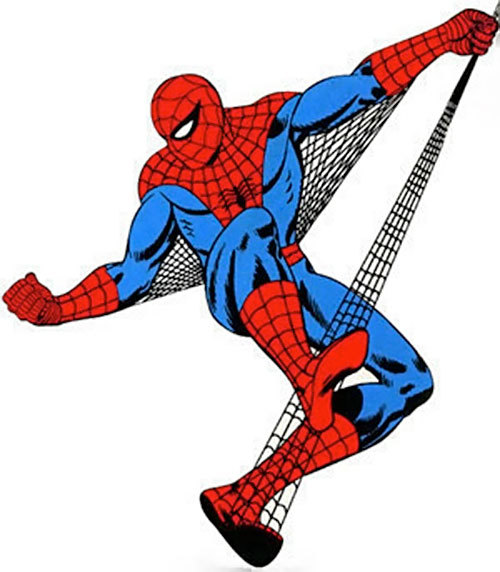

5) Peter Parker / Spider-Man / Superior Spider-Man (”Otto Octavius”) / Puny Parker / Petey / "Midtown High's Only Professional Wallflower" / Tiger / Spidey / Webhead / Web-Slinger / Wallcrawler / Wall-crawler / Amazing Bag-Man / Bombastic Bag-Man / Captain Universe / Ricochet / Hornet / Dusk / Prodigy / Black Marvel / Daredevil / Green Hood / Mad Dog 336 / Scarlet Spider / Iron Spider / Spider-Hulk / Spider-Lizard / Spider-Morphosis / Spider-Phoenix / Doctor Octopus / Wolverine / Punisher / Ben Reilly / Spider-X-Man / Professor S / Challenger / 'Pidey / Mr. Cartwright / Mr. Jameson / Mr. Simmons / Spider-Boy / Peter Palmer / Leo DiCaprio / Deadpool / Mud / Captain Klutz / John Doe - Dr. Peter Benjamin Parker
0 notes
Text

At first I thought about what age difference they might have. Then I started thinking about when they might first meet, but not remember each other. Now I’m starting to wonder why Duffy so angry and rude to the horses and especially to River.
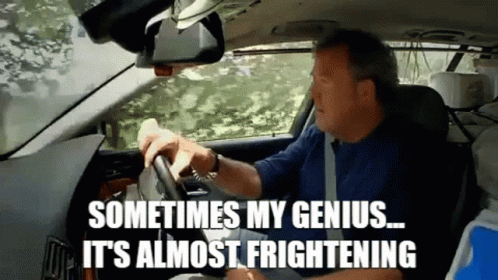
Actually, sometimes I don’t know where I’m going with my thinking. All this duffy/cartwright thing is wrong and absurd. On the other hand…. why not?
Just trying to figure out how far I can go beyond what’s allowed
5 notes
·
View notes
Text
Sherlock Holmes - verze od Guy Ritchieho
Filmovým průmyslem nejčastěji recyklovaná literární postava se vrací zpátky na začátek svých dobrodružství. Britský guru kriminální satiry Guy Ritchie upouští od ztvárnění uhlazeného gantlemana ve stylu Petera Cushinga, a představuje nám Sherlocka Holmese jako extravagantního bohéma a Tonyho Starka viktoriánské éry.Nový Sherlock Holmes je velmi příjemným překvapením především proto, že není tak „crazy“, jak se zdálo z jeho…- Více na https://www.kritiky.cz/sherlock-holmes-verze-od-guy-ritchieho/
#Retro filmové recenze#Andrew Brooke#Andrew Greenough#Ben Cartwright#Bronagh Gallagher#Clive Russell#David Garrick#Eddie Marsan#Geraldine James#Guy Ritchie#Guy Williams#Hans Matheson#James Fox#James Greene#Jefferson Hall#Jude Law#Kelly Reilly#Mark Strong#Michael Jenn#Miles Jupp#Ned Dennehy#Rachel McAdams#Robert Downey Jr.#Robert Maillet#Sam Creed#William Hope#William Houston
0 notes
Text
Lucy Buys a Sheep
S1;E5 ~ October 29, 1962
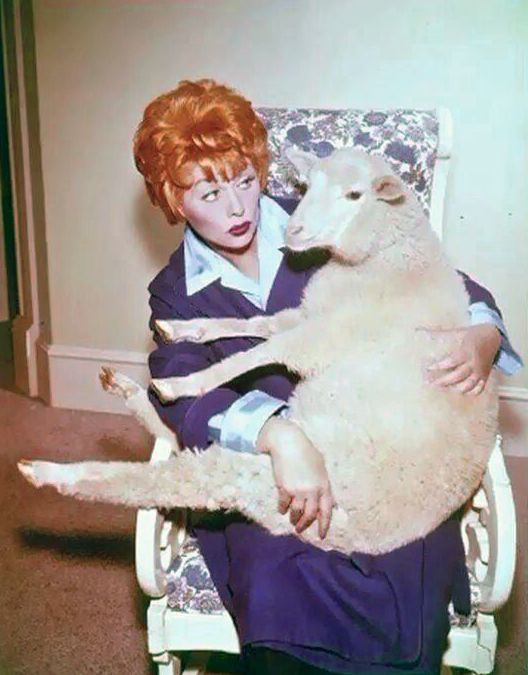
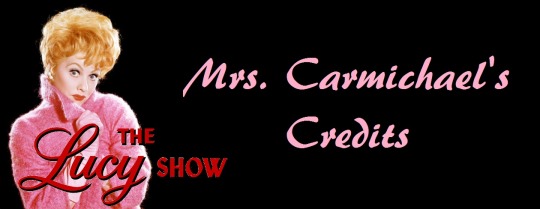
Synopsis
Lucy solves the lawn mowing problem by buying a sheep to eat the grass. Then winter weather makes the sheep, Clementine, have to spend the night in the house with Lucy, Viv and the kids, and it keeps them all awake.
Regular Cast
Lucille Ball (Lucy Carmichael), Vivian Vance (Vivian Bagley), Jimmy Garrett (Jerry Carmichael), Ralph Hart (Sherman Bagley), Candy Moore (Chris Carmichael), Charles Lane (Mr. Barnsdahl)

Dick Martin (Harry Connors) does not appear in this episode
Guest Cast

Parley Baer (Mr. Evans) previously played MGM's Mr. Reilly in “Ricky Needs an Agent” (ILL S4;E29) and the furniture salesman Mr. Perry in “Lucy Gets Chummy with the Neighbors” (ILL S6;E18). This is the first of his five appearances on “The Lucy Show.” He also made two appearances on “Here’s Lucy.” He is perhaps best known for his recurring roles as Mayor Stoner on “The Andy Griffith Show” and Doc Appleby in "The Dukes of Hazzard.”
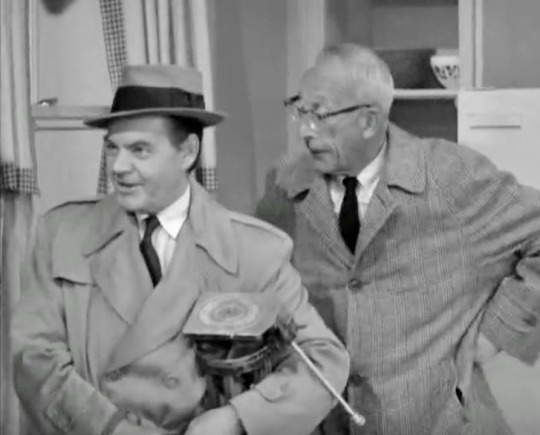
Eddie Quillan (Mr. Vincent, left) was born in Philadelphia in 1907. At the age of seven he was already performing in vaudeville with his sister and three brothers in an act called "The Rising Generation." He made his screen debut in 1926 in a Mack Sennett short and went on to appear in such classic films as Young Mr. Lincoln (1939), The Grapes of Wrath (1940), and Brigadoon (1954). This is the first of his two appearances on “The Lucy Show.” He also made two appearances on “Here's Lucy.”
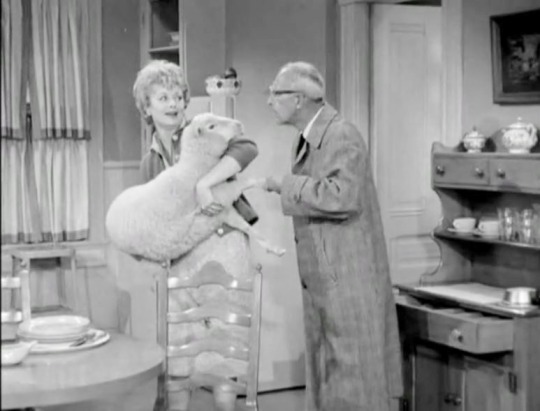
Ginny Tyler (uncredited voice of the sheep) started out on radio before hosting a children's TV show in Seattle. By the late 1950s, she had moved to Hollywood and was narrating record albums for Disney, including "Bambi" and "Babes in Toyland". After this episode, she did the voice of the sheep in Disney's 1964 hit Mary Poppins. She returned to do bird voices for “The Lucy Show” in “Lucy Gets the Bird” (S3;E12) and a 1974 episode of “Here's Lucy.” Although she died in 2012, her voice can still be heard in the chorus of birds outside The Enchanted Tiki Room at Disneyland and Walt Disney World.
Clementine the Sheep appears as herself.
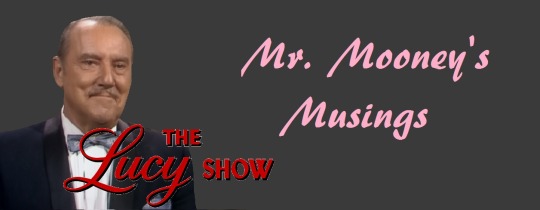
Although filming dates for “The Lucy Show” are not widely published, sources indicate that this may have been the second episode to be filmed. This would explain the lack of exposition about Lucy's dead husband, which is noticeably absent until episode four.
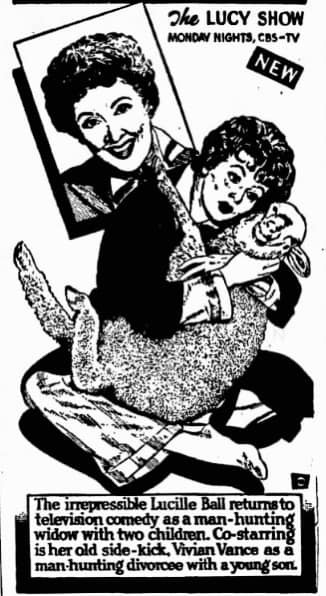
Before the series even launched, newspaper ads featured an artists rendering of Lucy cuddling the lamb, adding an inset of Vivian Vance’s headshot. The text calls them “man-hunters” which sounds a lot more salacious than it turned out to be!
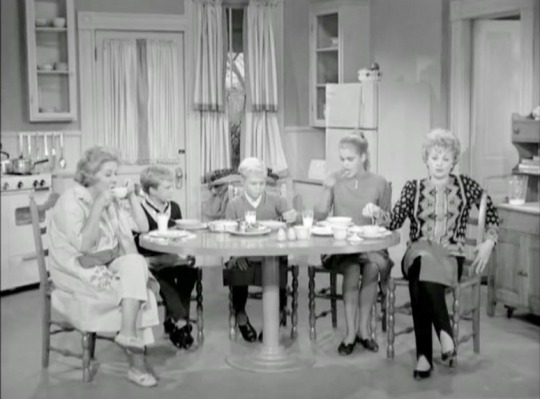
The opening scene from this episode was used as the audition material for the child actors. In all the scripts for the first few weeks, Lucy's daughter Chris was named Linda. It was changed because “Make Room for Daddy” (1953-1964), another CBS sitcom shot at Desilu studios, already had a daughter named Linda, played by Angela Cartwright.
In the opening breakfast scene between Lucy and Jerry, the close-up shots of Jerry are obviously over-dubbed into the master scene, causing Jerry's voice to sound noticeably different.

Lucy and a lamb were featured on the cover of this cut-out coloring book. Although Lucy sang to the sheep in the episode, she never played the guitar.
In this episode we hear about Walter Brewer, a boy in the neighborhood that Chris likes; Mrs. Farrington, a neighbor who wants to rent Clementine; and that Lucy is a member of the Embroidery Club (although she may be just joking). About the boys, we learn that Jerry's penmanship has improved but he is not a good speller, and that Sherman takes piano lessons after school, but he'd rather not.
Sherman has a teacher named Miss Clementine, who tells him that Australian farmers use sheep to keep their grass trim, giving Lucy the idea to buy a sheep. The sheep Lucy buys is named after the teacher, although the actual naming of the sheep is not part of the episode. Chris suggests they buy a power mower, which she says will cost $100. Adjusted for inflation, this would be more than $860 in 2020.
Lucy: “Compared to Mr. Barnsdahl, Scrooge was a swinger.”
Lucy is comparing Mr. Barnsdahl to Ebenezer Scrooge, the curmudgeonly miser who is the central figure of Charles Dickens' 1843 novella “A Christmas Carol.”
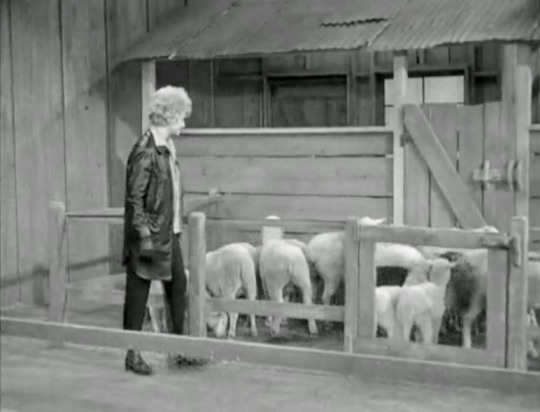
The episode actually employs a dozen sheep, including a black one, which Viv analogizes to her ex-husband, Ralph.
Lifting the sheep into the car, Lucy says “You really are all wool and a yard wide.” This is an old expression used to describe someone who is genuine and honorable. The adage has its roots in the clothing trade of the 16th century.
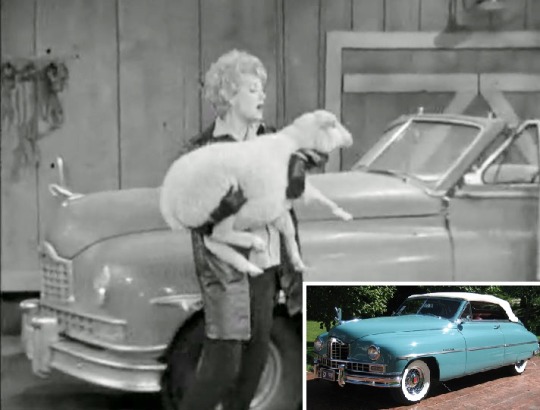
The scene set at the farm includes a 1949 Packard convertible. Packard started making automobiles in 1899 and went out of business in 1958, four years before the series premiered. On “I Love Lucy” the Ricardo's drove a brand new 1955 Pontiac Star Chief Convertible during season four because Desilu had a promotional deal with Pontiac. Future episodes indicate that Lucy doesn’t own a car, so the Packard may belong to Viv. In “Lucy and Her Electric Mattress” (S1;E12) Viv talks about her old car breaking down.
This is the first episode not to have at least one scene set in the living room. This is likely due to the fact that studio space was needed for the farm and bedroom sets.

This is also the first (and only time this season) that we see Lucy's bedroom. We saw Viv's bedroom in “Lucy Waits Up for Chris” (S1;E1).
The episode includes quotes from the Mother Goose nursery rhymes “Sing a Song of Sixpence” and “Little Bo Peep.”

"My Darling, Clementine" is a western folk ballad usually credited to Percy Montrose (1884), although it is sometimes attributed to Barker Bradford. It was also the title of a 1946 western film directed by John Ford. Here Lucy adapts the lyrics to “Go to sleepy, little sheepy” and “You're my lamby, I'm your mammy.” In the scene in the sheep pen, Lucy and Viv harmonize on a verse of the song. Later in the series, the girls will put their musical skills to use by joining a barbershop quartet.
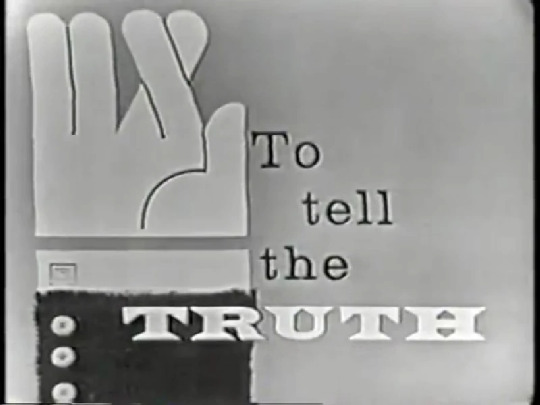
Searching for Clementine among the other sheep in the pen Viv says, "Will the real Clementine Carmichael please stand up?" This is a reference to the game show “To Tell the Truth” (1956-1968), which always ended with the host asking one of three contestants to stand if they were not fibbing to a celebrity panel of questioners.

Viv says that the falling snow isn't “pennies from heaven.” This is the title of a popular song and film (both from 1936) that later inspired a 1978 BBC TV series and a 1981 feature film.
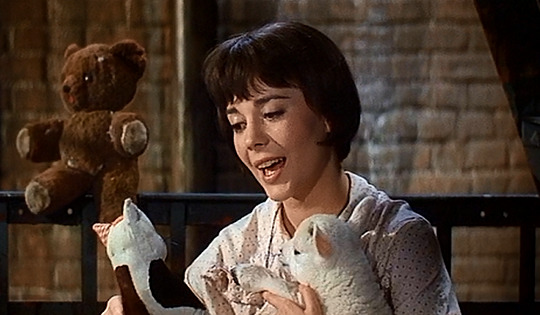
In 1962, Lucy wasn't the only one singing to a live sheep. In the hit film Gypsy, Natalie Wood sang “Little Lamb,” a song by Jule Styne and Stephen Sondheim.
A 1956 episode of “Father Knows Best” begins with son Bud not wanting to mow the lawn. He suggests buying a cow to eat the grass instead.
Callbacks!

At the breakfast table, Lucy absent-mindedly stirs her coffee for a full minute, an annoying trait that Lucy Ricardo was accused of by Ricky during “In Palm Springs” (ILL S4;E26).
Lucy and Ethel fantasize about buying mink coats with the money they make by renting out sheep. Lucy Ricardo was always dreaming of a getting a mink coat, and she nearly did in “The Fur Coat” (ILL S1;E9). She nearly gets her mink in “Redecorating the Mertzes’ Apartment” (ILL S3;E8), but the cost of the coat ends up paying for new furniture.

The lamb's bleats were provided by Disney voice artist Ginny Tyler. Other Desilu actors to have voiced characters for Disney include: Verna Felton, who played Mrs. Porter in “Lucy Hires a Maid” (ILL S2;E23); Lee Millar Jr., who played Chip Jackson in “Lucy and the Dummy” (ILL S5;E3); and Eleanor Audley, who played Mrs. Spaulding in “Lucy Wants to Move to the Country” (ILL S6;E15). Like Tyler, Audley's voice is still heard in the Disney theme parks as Madam Leota, the head in the crystal ball in the Haunted Mansion. In the same way Tyler was the voice of Clementine, voice artist June Foray provided the barks for Fred the dog.
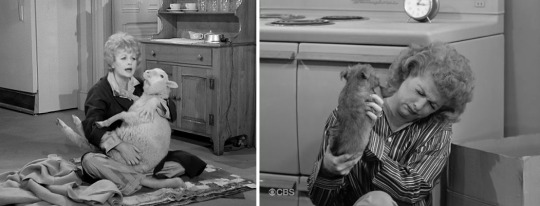
Lucy sits on the floor and tries to convince Clementine to go to sleep just the same way she did with Fred the dog in “Little Ricky Gets a Dog” (ILL S6;E14) when he, too, keeps everyone awake all night.

Chris suggest Lucy get a power mower, which was not a happy experience for Lucy Ricardo when she borrowed one from the Ramsey's in “Lucy Raises Tulips” (ILL S6;E26)!
Viv: “Who got dinner last night? Who did the laundry last week? Who did the marketing yesterday? Who? Who?”
Lucy: “Apparently some crabby blonde owl.”
The joke is a variation on one from the very first episode of “I Love Lucy,” “The Girls Want To Go To a Nightclub” (ILL S1;E1):
Ethel (to Lucy, who is dialing the phone): “Who are you calling? Who, who, who?”
Lucy: (to Ethel): “Quiet, you sound like an owl.”
Blooper Alerts!

Time Check! The kitchen clock reads 3:40 when Lucy and Viv are preparing dinner. In the next shot it says 5:30. The clock continually read 3:40 in the first few episodes.
ADR? When the kids run off to catch the school bus, a bleary-eyed Viv mutters “Don’t fall off the bus, children.” The line is partially covered by ad-libs from the others.
Clock Watchers! Speaking of clocks, at the start of the bedroom scene, Lucy notes that it is 2:30 but a few minutes later she tells Viv it is “after midnight.” While not exactly a blooper, why wouldn't Lucy just say “it's after 2:30”?

Forecast Fumble! At one point, Lucy says it is too early to snow, yet two episodes earlier there was a snowstorm in “Lucy is a Referee” (S1;E3) that strands the team in Lucy’s living room. This is because the episodes were filmed in a different order than they were aired.

“Lucy Buys a Sheep” rates 4 Paper Hearts out of 5
#Lucy Buys a Sheep#The Lucy Show#Lucille Ball#Lucy Carmichael#Vivian Vance#Charles Lane#Candy Moore#CBS TV#1962#Clementine#Ralph Hart#Parley Baer#Jimmy Garrett#Ginny Tyler#Disney#Eddie Quillan#Sheep#Packard#Scrooge
2 notes
·
View notes
Text
The Phoenix Sanction, by Christopher Cartwright
The Phoenix Sanction, by Christopher Cartwright
Can Sam Reilly Find Answers In Time?
Amelia Earhart begins the fourteenth book in the Sam Reilly series, when she must land on a small isolated island. Her disappearance is well documented. She is never found.
Andrew Goddard awakens on a plane, traveling to Venice, everyone unconscious, the cockpit empty.
A search for a set of ancient stone masks, wanted by archeologists, collectors, and others…
View On WordPress
0 notes